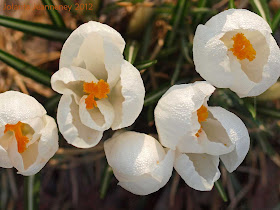by John Jeanneney
The first Canadian Province to legalize leashed tracking dogs was British Columbia on their west coast. This occurred more than a quarter of a century ago. “B.C.” is an important province for big game hunting, but strangely the idea of tracking wounded deer, elk, moose and bear never caught on there. Michael Schneider, a German who emigrated to B.C. and became a licensed guide, uses an Eastern European tracking dog Slovensky Kopov for tracking moose, but his successes have not inspired many to follow his course.
The French speaking Province of Quebec, on the eastern side of Canada, was the second province to legalize, and here chiens de sang (blood tracking dogs) caught on quickly in a big way. The reasons for the success of blood tracking in Quebec and the contrasting lack of interest in British Columbia are not easy to explain. The French speaking trackers in Quebec drew their tradition and inspiration from Europe, mainly France and Belgium, while in B.C. most guides saw blood tracking as a radical, foreign and unnecessary idea.
 |
| Chantal Bellemare with her wirehaired dachshund and their find. Chantal lives in Victoriaville, Quebec |
 |
| This moose was recovered by Denis Fortier with his teckel. Denis resides in Victoriaville, Quebec |
A small group of hunters in Ontario, just west of Quebec, are pushing for legalization and it appears that they will succeed, No one knows what form the legalization will take since the Ministry of Natural Resources plays their cards close to the vest. I have worked with the trackers and provided them with background information, but they are now encountering doubts among hunters and wildlife officials, These are as negative as anything I encountered in New York State in 1975. If hunting practices are not tied into existing traditions, as was the case in Quebec, it takes a long time for things to change.
Nova Scotia, a small province on the Atlantic Coast, is the third province to legalize, and I will look forward to digging out the story of how this happened. In a former life I was a history professor; sometimes when I’m poorly focused on dogs and deer blood, the old urges come creeping back.
Returning to Quebec, the success that the trackers have had is really remarkable. Currently there are about 48 active trackers and many of them use European wirehaired dachshunds (Teckels). The small dogs have an advantage when tracking through thick back spruce, cutovers clogged with dead branches and in those awful alder swamps where all the alder shoots grow out at a 45 degree angle. They go under the trouble. Tracking on a long leash is mandated by law; in that wilderness country the trackers use about 18 meters of 4 mm polyethylene marine cordage. It works beautifully and doesn’t hang up in their type of thick stuff. I have tried it in our goldenrod fields, and here it is a nightmare.
 |
| Steve Durocher from Warwick, Quebec |
This year the Quebec trackers found 103 whitetail deer, 86 moose and 6 bears. Their recovery rates ran about 40% which is a little better than what we do down here in the leashed tracking dogs states. The trackers in Quebec are pretty consistent in maintaining this recovery rate from 2008 to 2011. These guys are good and tough to compete with. I haven’t come up yet with an excuse for why they do a bit better than we do, but I’m working on it.
Bows and crossbows are big in Quebec. About 73% of their calls are to track big game wounded by these two weapons.
Record keeping for tracking in Quebec is more tightly organized than in any of the American states. Alain Ridel does this on a voluntary basis for his tracking organization ACCSQ and for the Province of Quebec; it is a lot of work!
 |
| Gilles Deziel and his dachshund Whiskey |
 |
| This moose was found by Bernard Demers and his dachshund |
 |
| Stéphanie Marcoux from Warwick, Quebec |
More pictures of big game recovered by trackers from Quebec can be viewed at http://www.accsq.com/photos.html













































